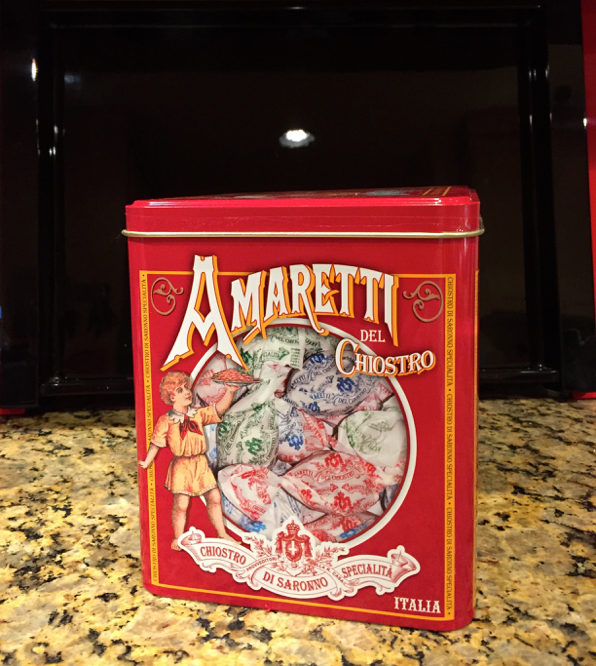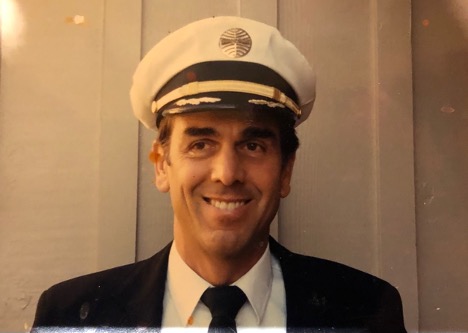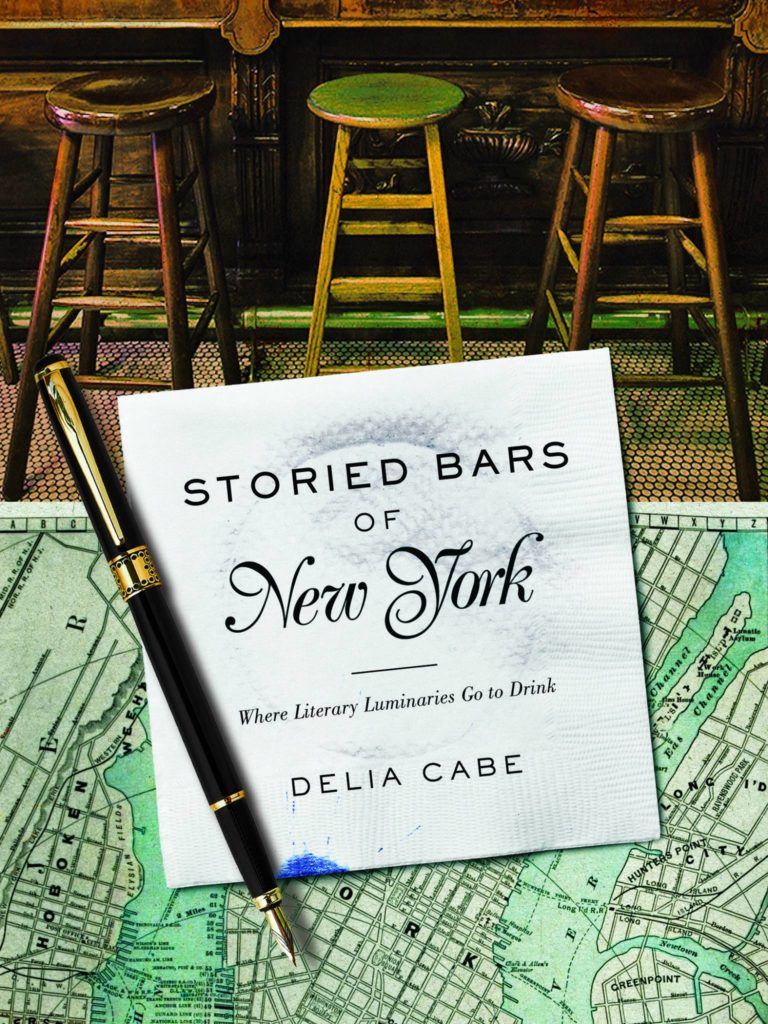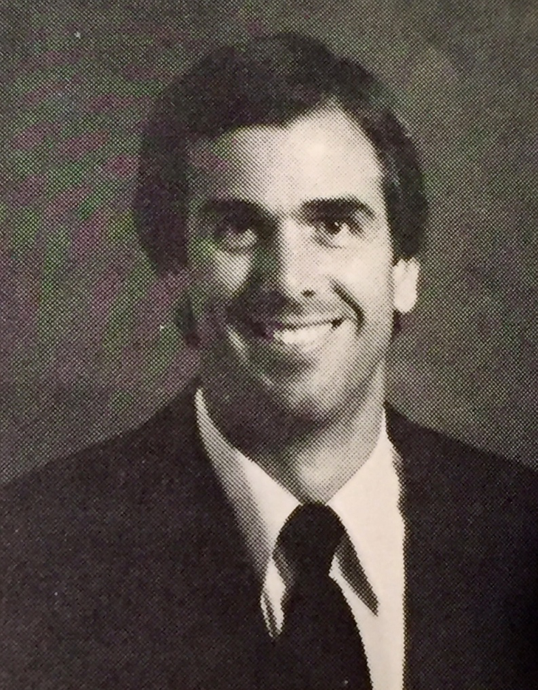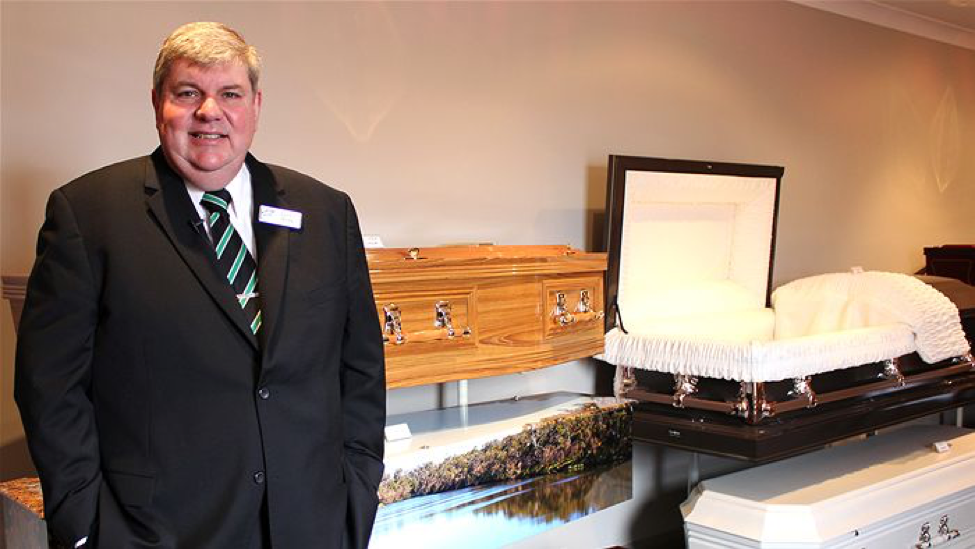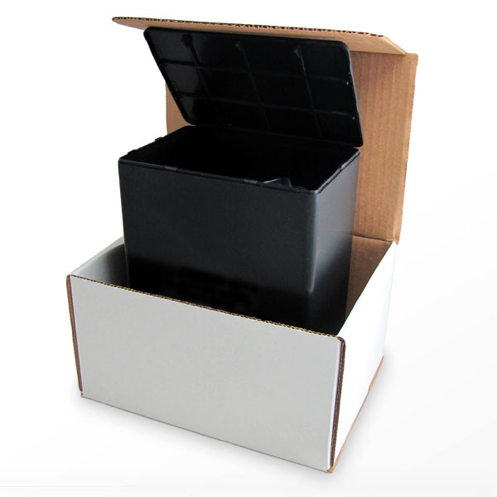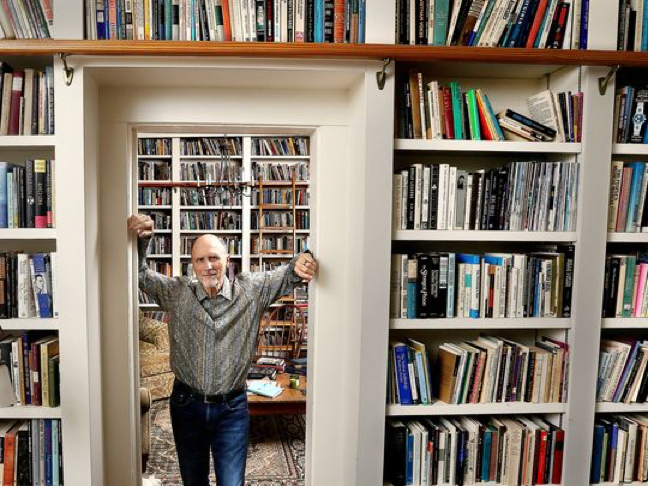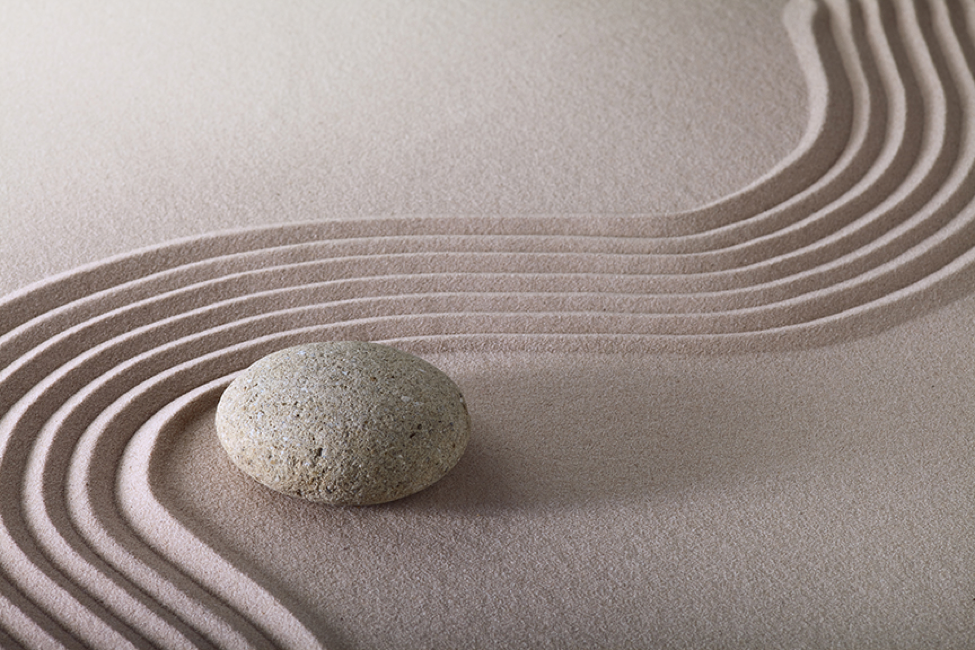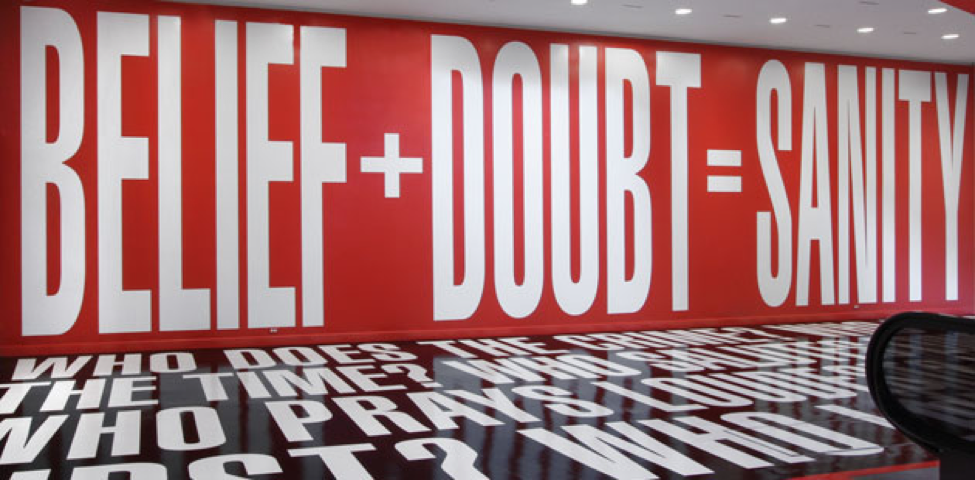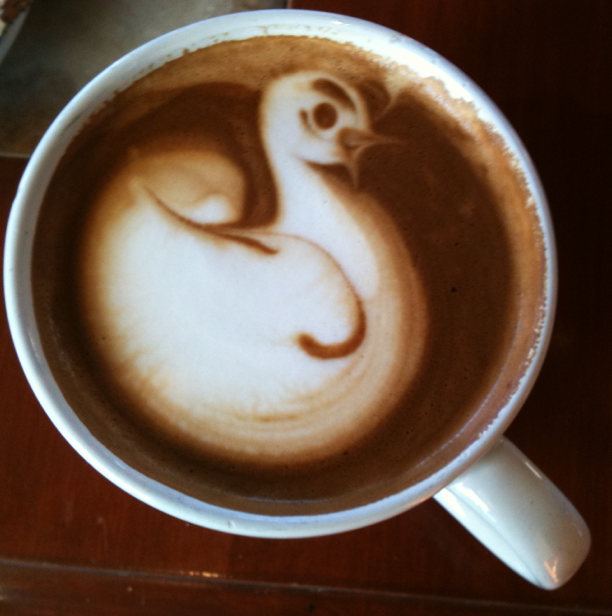
“When you aim for perfection you discover it’s a moving target.”
Geoffrey Fisher – Archbishop of Canterbury (1945-1961)
There are many strictures and cautionary tales about the pursuit of perfection and though the target may be elusive sometimes it’s all about the chase.
The Surviving Seattle blog began in the fall of 2012 as an antidote to the weather I hate in the city I love. I was looking for strategies to mitigate against the gray overcast, constant rain, and penetrating cold. I love writing this column and for the most part it’s kept the weather from defeating my optimism. I’ve written about films and food, books and bikes, art and architecture – even politics – but I’ve barely touched on the thing that gets me up and ready to open the front door and face the gloom. What is it? What keeps me charged up, optimistic, and hopeful? Of course, it’s COFFEE and my quest for the perfect cup.
Just to be clear, we’re not talking about your mother’s Folgers, not what the Germans derisively refer to as braunes wasser (brown water), or what you get at the diner poured from an onion shaped glass pot that’s been sitting on a hot plate for hours.
With all due respect, I know there are those who prefer a fine tasting cup of “drip” coffee, and there are aficionados who brew it lovingly with carefully measured Arabica beans, time it with a digital timer, and pour it cautiously through a Melitta paper filter. There are others who like theirs pressed carefully down through a Pyrex French Press carafe, but for more than 40 years the only real coffee for me is the one and only forcibly extruded, crema-topped, high octane, Italian-style espresso – singolo, doppio, macchiato, cappuccino, or caffe latte.
Pursuit of the perfect espresso drink is like rocket science. The task is to match the right payload with the right delivery system. Even the most expensive beans roasted to perfection are wasted if the brewing system is inadequate. If the payload is too heavy the resulting coffee is too strong, too weak, too acidic, or just sludge. On the other hand, if the beans are old, over-roasted, or too green what ends up there is equally unsatisfying. The rocket fizzles or the payload is a dud. The payload isn’t right for the delivery system or the delivery system can’t lift the payload.
I realize this tech talk and metaphor is a little over the top, but to those of us who LOVE the pursuit is a form of foreplay. It’s disconcerting to hear myself talk about the quest, the knight errant, or foreplay when what we’re really talking about is a cup of coffee, but the search for perfection is also about obsessive compulsive behavior. I own it. I am OCD about coffee.
Here’s a condensed history of the quest: I learned to love espresso on my first trip to Europe in 1965. California in those days was just discovering the joys of espresso. Since then the Starbucks revolution has brought espresso to the people and in recent years I have been able to find near perfection in commercial settings like the caffe latte (at the top of the page) from the Urth Caffe in Santa Monica but I’ve never been able to reproduce it at home.
My first at-home effort was a basic, no-frills, stove top espresso pot like that found in most Italian homes:
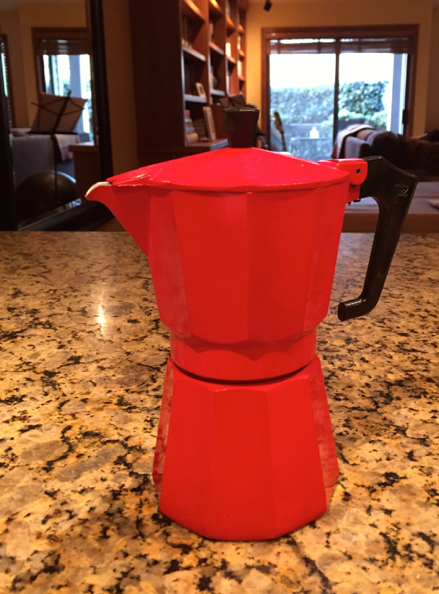 Here it is. It does the job. It supplies a jolt. It gets the engine started in the morning, but its primitive technology lacks the finesse and fine art of Italian coffee making – the kind I came to love that’s available in any corner coffee bar in Italy. The stovetop’s simplicity and efficiency are its strengths but for a sophisticated modernist looking for a superior end product it doesn’t deliver. It doesn’t grind the beans, time the brewing cycle, or steam the milk. It tends to be dark, dark, dark. Powerful but acidic. Still, it is the brew of some espresso purists.
Here it is. It does the job. It supplies a jolt. It gets the engine started in the morning, but its primitive technology lacks the finesse and fine art of Italian coffee making – the kind I came to love that’s available in any corner coffee bar in Italy. The stovetop’s simplicity and efficiency are its strengths but for a sophisticated modernist looking for a superior end product it doesn’t deliver. It doesn’t grind the beans, time the brewing cycle, or steam the milk. It tends to be dark, dark, dark. Powerful but acidic. Still, it is the brew of some espresso purists.
The stove top was the standard until a few years ago when Nestle, the food conglomerate, aware of the espresso revolution and sensing the need for a more sophisticated home system, created a subsidiary brand called Nespresso and developed an automatic machine with prepackaged coffee capsules. Nespresso was an instant hit with a system that simplified all the functions.
The Nespresso Cube was the prototype (below). It heated the water and forced it through individual foil-wrapped single shot capsules. It didn’t heat or froth the milk, but Nespresso solve that problem with a separate milk frother accessory called the Aeroccino to deliver a creamy foam. Now cappuccino lovers had a simple home system.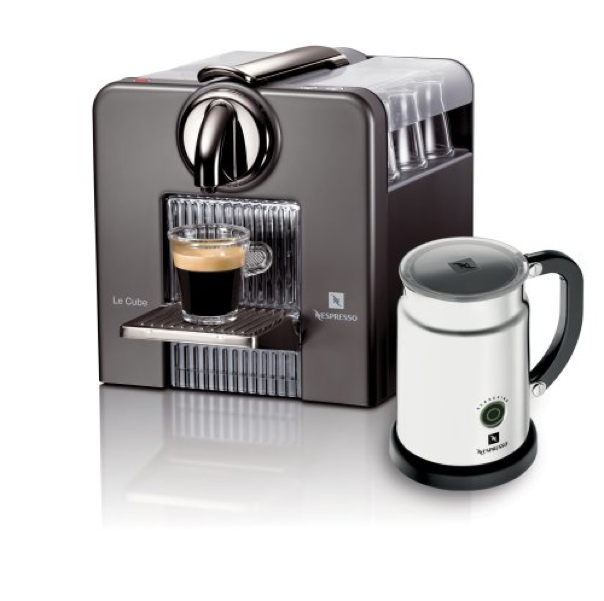
Nespresso created that simple system – but the coffee was expensive. Individual capsules cost between 80 cents and a dollar each. Two shots, at home, cost around $2, not that much less than a latte at Starbucks or your local drive thru.
I tried a Cube for a couple of years until the next improvement came along – the Latissima – a machine that incorporated the milk frothing function and cutting edge Italian design. It also came in colors. That was important to Marilynn who is a color coordinator par excellance. Her at home color scheme is black, red, and stainless. The Latissima comes in Chinese lacquer red, the same Chinese lacquer red as the walls that wrap from the living room to our bedroom.
So we upgraded and updated to the state of the art Latissima.
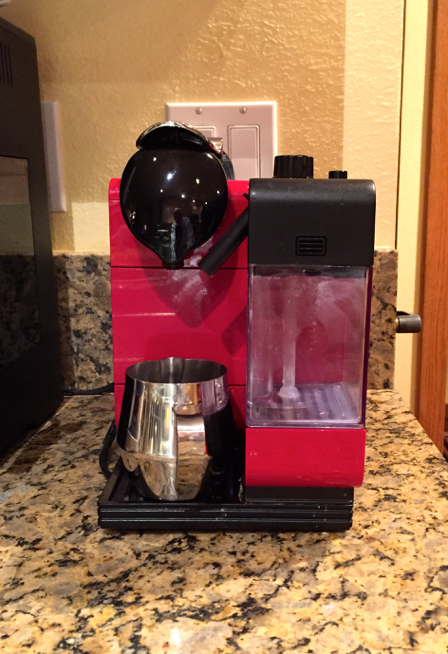 Remember the Archbishop’s quote about perfection? It’s a moving target and the Latissima is not the Holy Grail. It’s “adequate” but can’t quite deliver the perfect coffee. I tried a dozen different capsule flavors and intensities. They come in various categories with descriptions that might reasonably be mistaken for something out of the Wine Spectator. Intensities are rated on a scale of 1 to 10. But, bells and whistles aside, the Nespresso capsules are expensive and the machines don’t have the muscle to deliver a coffee that stays hot like a commercial latte and hits the tongue with impact.
Remember the Archbishop’s quote about perfection? It’s a moving target and the Latissima is not the Holy Grail. It’s “adequate” but can’t quite deliver the perfect coffee. I tried a dozen different capsule flavors and intensities. They come in various categories with descriptions that might reasonably be mistaken for something out of the Wine Spectator. Intensities are rated on a scale of 1 to 10. But, bells and whistles aside, the Nespresso capsules are expensive and the machines don’t have the muscle to deliver a coffee that stays hot like a commercial latte and hits the tongue with impact.
All this time my OCD was idling in the background because despite the variety of Nespresso offerings I was never able to find the payload or delivery vehicle that met my taste, texture, or warmth needs. It is a good system for delivering a simple, quick, one step coffee, but not necessarily a satisfying one.
My particular problem, in addition to OCD and time spent in Italy, springs from the fact that 25 years ago I owned an Italian café that featured a commercial 220 volt, 3 Group, Faema machine, the 747 of espresso delivery systems. I was trained to make espresso drinks by Vida, a young woman who learned her craft at Torrefazione, Seattle’s most famous Italian-style roaster. There, every morning before the restaurant opened, a group of friends – including the owner of the Elephant’s Perch mountaineering store next door, the Forest Service snow ranger, and others – gathered at the Piccolo bar where I brewed frothy bowls of caffe latte for them to kick start the day. I know the coffee taste I’m looking for.
The truth is that I’ve known for a long time that it’s possible to make that coffee at home. The problem is that it’s not cheap. I always hoped the next iteration of the home machine would be able to duplicate the true strength and flavor of Italy. I was looking for a bargain, and it’s clear to me now that you get what you pay for.
A year ago I went skiing at Whistler with my friend, Tim Shields, who is as particular as I am about his coffee. Tim made the leap to an expensive machine a few years ago, and on our first morning at Whistler he brewed up a delicious latte on his DiLonghi Magnifica 3300. That did it.
Last week I ordered one, and here it is. I made my first cups yesterday. It takes a little practice to get the grind (yes, it grinds the beans), portion size (yes, adjustable), steamer/frother operation (yes, commercial grade), cleaning protocol, and find the right beans, but it is indeed Magnifica.
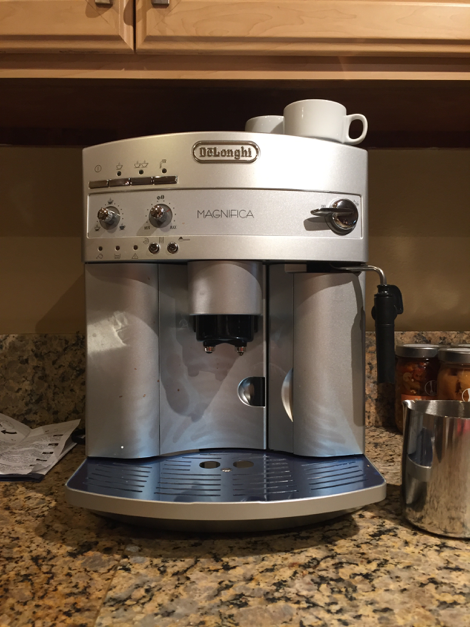
Marilynn is amused, but she’s also relieved. She no longer has to listen to my complaints about how my coffee doesn’t taste right or stay warm. It doesn’t last until I’m through reading the NY Times (but would any cup of hot liquid last that long?).
We’ll know soon if the quest is over, if the Holy Grail of home-brewed espresso has been found. My friend, Julie, has a daughter who works at Starbucks headquarters and she is bringing me a variety of beans to try out this week. Right now, I’m in the honeymoon phase and the target seems to have stopped moving. It looks and tastes just right – and with an Amaretti cookie dipped in the crema… Oh my God, we could be on the Via Veneto.
